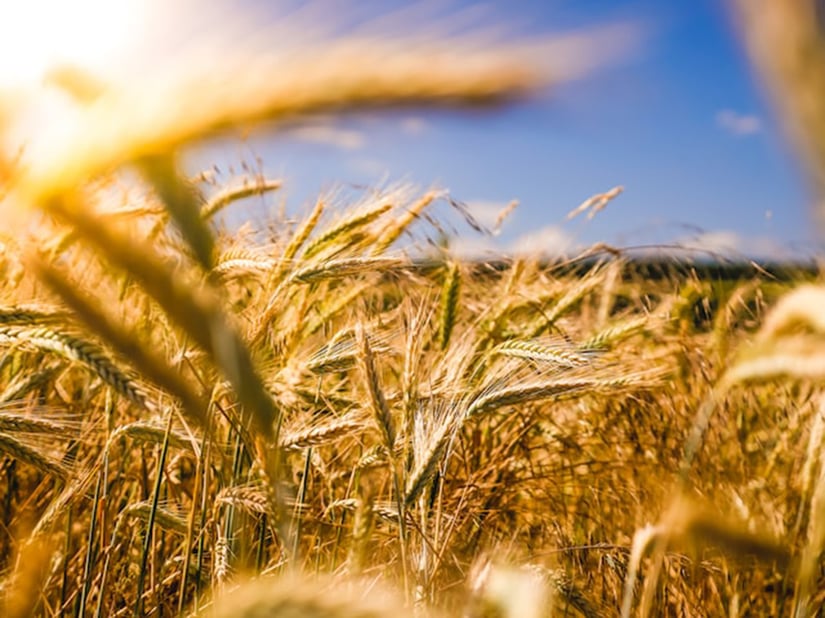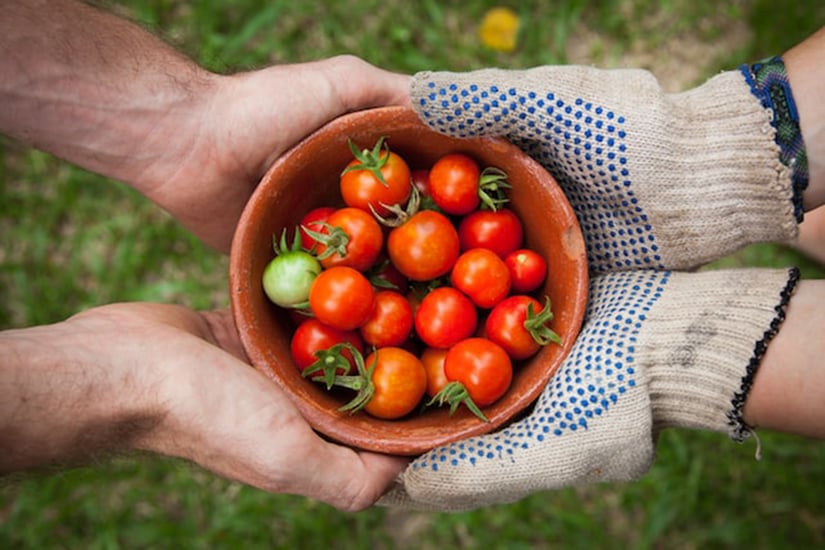Agritech is being used around the world to successfully improve agricultural efficiency and increase production. In this article, we will introduce agritech and the initiatives of each company, so let’s deepen our understanding so that we can stay up to date with the times.
What is “agritech” that combines agriculture and technology?
Here, we will introduce what agritech is, which combines agriculture and technology, which is attracting attention.
Differences with smart agriculture
“Agritech” refers to technology that promotes IT in agriculture using ICT technologies such as AI, big data, and IoT , and is a coined word that combines agriculture (agriculture) and technology (technology). . Agritech is a term mainly used overseas; in Japan, it is synonymously referred to as high-tech agriculture or smart agriculture.
Domestic market size
The domestic agritech market size is expanding year by year, and according to the Fuji Keizai Group, the market size in 2018 was 69.8 billion yen, and is expected to exceed 100 billion yen in 2030.
Since it is a relatively new market, there are few barriers to entry, and not only large companies but also start-up companies and venture companies are participating, so it can be said that it is a promising industry with a bright future.
Reasons why agritech is attracting attention in Japan and social issues

One of the reasons why agritech is attracting attention in Japan is that Japan’s food self-sufficiency rate is low. Japan’s food self-sufficiency rate in 2020 was low at 37%, and it is clear that Japan relies on imports from overseas. As a result, there is no guarantee that we will be able to continue to secure a stable supply of food, as we are greatly affected by the situation and trade relations in importing countries.
There are also challenges in the environment surrounding domestic agriculture. The aging of farmers and the lack of successors are also a problem, but if techniques are not passed on, there is a possibility that Japan’s agricultural technology will continue to decline. As a result, the introduction of agritech in Japan has begun little by little.
Agritech’s main initiatives
We will introduce the main initiatives related to agritech, which is attracting attention not only in Japan but also around the world.
Spraying pesticides by drone
By using small agricultural drones to spray pesticides from the sky, you can improve the efficiency of agricultural work. Previously, pesticides were manually sprayed using machines, but by operating a drone and automatically spraying pesticides, it is now possible to spread pesticides over a wide area in a short period of time. At the startup company BioC ar bon Engineering, one person operated six drones at the same time and successfully planted mangroves in Myanmar.
Monitoring and management using IoT devices
Using IoT devices, it is possible to monitor and manage livestock and crops.
For example, by monitoring the daily behavior of livestock using AI cameras, it is possible to notice minute changes in physical condition and provide the necessary care in a timely manner. Similarly, for agricultural products, there is a function that automatically notifies you of the harvest time based on the growth status, and a function that links environmental information such as temperature, humidity, and sunlight hours with harvest results, and proposes the optimal growing method according to the situation. It can also be applied to other functions.
Unified supply chain management using blockchain
Through quality control using blockchain technology, we can centralize supply chain management and provide safe and secure agricultural products. Today’s supply chains are becoming more diverse and complex, and ensuring traceability to prove the safety of agricultural products is an issue.
Therefore, blockchain technology used for crypto assets such as Bitcoin is attracting attention. In blockchain technology, each block is linked by a chain, making it difficult to tamper with the data, making it possible to prove the transparency of agricultural products.
Big data analysis
By performing big data analysis using AI, it is possible to quantify the invisible know-how of experts. This makes it possible to grasp the harvest timing based on the growth status of crops and to take appropriate measures against pests, which can be used to pass down techniques to successors.
Advantages of introducing agritech

The introduction of agritech has the potential to transform agriculture, which until now had a strong analog image, into a high-tech industry, and to greatly improve the way people work. Here, we will introduce the benefits of introducing agritech.
Improving agricultural efficiency and increasing production
One of the benefits of introducing agritech is improving the efficiency of agricultural work and increasing production. The reason is that with the introduction of agritech, agricultural tasks that were previously done manually, such as sowing seeds, spraying pesticides, and harvesting, can be performed by drones and robots, making it possible to perform a wide range of tasks in a short period of time.
Furthermore, by using the free time gained from this process to improve varieties, it has the potential to lead to the creation of new varieties.
Facilitation of new entry through digitalization
By introducing agritech and visualizing the know-how of experienced workers as data using AI, it is possible to create an environment that is easy for new entrants, such as young people who want to start farming, to enter the industry.
The know-how of experts is often passed on orally or through actual experience, and there is no guarantee that the know-how will be accurately transmitted. Furthermore, as the population continues to age, it is unlikely that people will be able to continue working until they have inherited all of their skills, so it is important to reduce the barriers to new entry by converting know-how into data using AI. .
Reduction of working hours and burden
One of the reasons why the number of farmers is decreasing is that there is an established image that farming is difficult due to various factors such as physical strength and weather. Therefore, by using agritech to have drones and robots perform agricultural work on behalf of farmers, it is possible to reduce labor hours and reduce the burden. One of the appeals of this is that you can use the free time you get to work on a side job or use it on your days off, giving you freedom in how you work.
Realizing new ways of working
Agriculture has an established image of hard labor, long hours, no days off, and demanding farm work, but by introducing agritech, it is possible to realize new ways of working that have never existed before.
Using IoT, it is possible to remotely monitor crops, and it is also possible to know the growth status of crops and the timing of harvest even when you are away from home. If this happens, you won’t have to visit the site every day.
Disadvantages of introducing agritech

So far, we have introduced the benefits of introducing Agritech, but when considering implementing Agritech, it is important to understand the disadvantages as well.
Initial cost is high
One of the disadvantages is the high initial cost of installing drones, robots, and monitoring systems.
However, if you take a long-term view, you can expect significant improvements in work efficiency and increased production, so considering it as an initial investment, it cannot be said to be a disadvantage. Please make a medium- to long-term plan and consider implementing it in order to receive these benefits.
Difficulties in securing and training skilled human resources
Agritech uses AI and IoT to improve agriculture, but users are also required to have knowledge and understanding of AI and IoT.
The difficulty of securing and training human resources with skills related to these ICT technologies is an issue, and agricultural machinery manufacturers and ICT vendors are working to develop products that are easy to use even without special skills.
Lack of compatibility with software, etc.
Since agritech uses relatively new technology, there is a problem with poor compatibility of software between devices.
Even if you try to link devices from different manufacturers, they may not be able to work together because the interface specifications for exchanging data are different. In the future, this problem may be resolved as standards are developed, but it will not be resolved overnight, and I think it will take some time.
Companies and organizations that utilize domestic agritech

Here we will introduce companies and organizations that utilize agritech in Japan.
Agricultural data sharing demonstration project implemented in Niigata City, Niigata Prefecture
Niigata City is working to improve the efficiency of agricultural work and change the image of agriculture by using agritech.
Implementing agritech has been a challenge, such as high initial costs and the need for special skills. For this reason, Niigata City is implementing an agricultural data sharing demonstration project. By sharing agricultural data among multiple farmers, we have succeeded in improving productivity and production volume through data-based management decisions.
“Yanmar” utilizes in-house developed agricultural machinery
Yanmar Holdings Co., Ltd. is developing its own agricultural robot called Agrobot. As of November 2022, this has not yet been realized, but our goal is to develop a robot that can automatically perform tasks tailored to the local environment.
However, there are some robots that are already in practical use. A robot tractor is an agricultural robot that can automatically turn and work automatically by operating a tablet remotely. Agrobots aiming for complete automation may also become a reality in the near future.
“Midori Cloud” provides field monitoring system
Midori Cloud uses IT to measure and record the field environment and work, and converts it into data, making it possible to accumulate experience and share know-how by visualizing agricultural work.
Farmers’ sense and experience are important in agriculture, which requires dealing with an uncertain environment. At Midori Cloud, by visualizing this using IT, we have been able to improve the efficiency of agricultural work and increase production.
AGRI SMILE’s business goal is to pass on agriculture to the next generation
With AGRI SMILE’s service, by centrally managing and evaluating cultivation data, you can utilize the feedback for your next cultivation. We are also developing a service that allows cultivation techniques to be shared as VR videos, making it possible to pass them on to the next generation.
Companies and organizations that utilize overseas agritech

Agritech is attracting attention not only in Japan but also overseas. Here we will introduce companies and organizations that utilize agritech overseas.
Growing tomatoes in seawater “Sundrop Farm (Australia)”
South Australia has dry land that stretches all the way to the coast under harsh sunlight. Sundrop Farm was created by focusing on an environment where large quantities of seawater, which is unsuitable for agriculture, can be secured.
By distilling seawater using solar energy collected using specular reflection, we succeeded in securing a large amount of fresh water. We use this fresh water to grow tomatoes.
Agrobot (Spain) develops a harvesting robot
Agrobot is a company based in Spain that develops “strawberry harvesting robots”. Using a sensor at the tip of the robot, it not only determines when to harvest strawberries based on their ripeness, but also automatically harvests the strawberries.
In-house crop management and hydroponic cultivation “Plenty (USA)”
Plenty is a company that specializes in hydroponic cultivation, and grows kale and lettuce in-house. By managing crop data and controlling the amount of water and minerals, it is possible to adjust the flavor. Another feature is that the amount of water required for cultivation is about 1/20 of that of regular outdoor cultivation, contributing to water conservation.
The future of agritech

The future of agritech, which is expanding its market size, is bright as a savior for domestic agriculture, which is facing concerns about accelerating decline in agriculture due to the aging population and lack of successors.
Efforts to utilize agritech are becoming more popular not only in Japan but also overseas, and it will not be long before we see fully automated robots doing farming in place of farmers. The industry is in a period of growth, so let’s keep an eye on future trends.
Summary

So far, we have introduced agritech. In Japan, it is often referred to as smart agriculture, and although it is a technology that is attracting a lot of attention around the world, I think that few people understand it accurately.
Through this article, let’s deepen our understanding of agritech and pay attention to trends in agritech that are likely to attract more and more attention in the future.